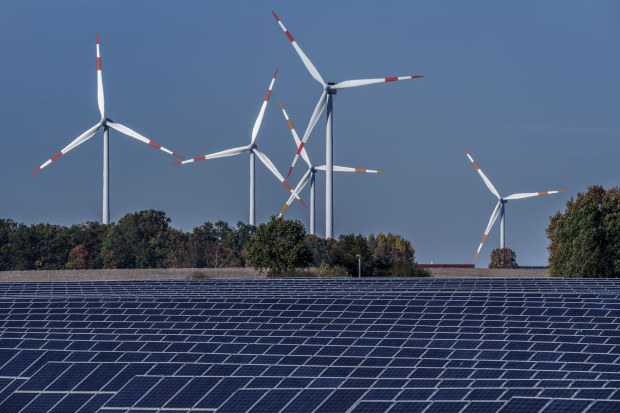Opinion

How to get fiscal dividend from a jobs, skills and training virtuous cycle
Reforms in vocational and higher education, and migration, can realistically aim to promote economic growth and would more than repay the upfront investment cost.
Peter DawkinsContributorAlthough the economy has started to slow, Australia still has a tight labour market with severe skill shortages. And many more skilled workers will be needed in the future, not least to enable the clean energy transformation and help boost our productivity performance.
Upfront investment will be required from government, industry and students, but the returns should justify the investment. Better value for money will be achieved by creating greater synergy between vocational education and training (VET) and higher education, appropriately complemented by the migration system. Pleasingly, current reform processes in VET, higher education and migration are emphasising the need for greater complementarity.

Many more skilled workers will be needed in the future, not least to enable the clean energy transformation. AP
Jobs and Skills Australia (JSA) was created in November last year. In reports released this month, it has identified Australia’s areas of skill shortage, its likely future skills needed over the next decade and beyond, and a study of the workforce needs of the clean energy transformation and the implications for education, training and migration.
It has also laid out a process for developing a national jobs and skills road map, with a joint approach to the three key pillars of the national skills system: VET, higher education and migration. The high-level objectives are to minimise unemployment and underemployment; increase productivity, real wages and participation; reduce disadvantage; and increase equity. Achieving these objectives would create a virtuous cycle to enable further re-investment in the road map.
This will require businesses, unions, Commonwealth and state governments, and education and training providers to join forces in a big national effort. As a tripartite body, in partnership with Jobs and Skills Councils for 10 industry sectors, Jobs and Skills Australia will play its part in helping mobilise that effort and monitor its success.
Our future skills needs are demanding, particularly in regional Australia. For example, the clean energy transformation will require about 32,000 more electricians, already in shortage, as soon as 2030. The care and support workforce, already suffering significant shortages, is expected to grow by almost 145,000 workers between now and 2033.
Urgent actions are needed to train more electricians, although the lag in training times required represents a challenge, and migration will have to play its part. A gender equity strategy will be important – women account for only 2 per cent of electricians. Opening up apprenticeships to international students should also be considered.
Deeper collaboration needed
For the broader clean energy workforce, deeper collaboration between VET, higher education and industry and new models for course delivery are required. TAFE Centres of Excellence collaborating with universities can play a strategic role in this.
Some critical skill needs for clean energy are in professional occupations where sufficient numbers of qualified people apply, but where the employers report a lack of suitable applicants. This includes civil and mechanical engineers and agricultural and forestry scientists. Enhanced work-integrated learning, cadetships and work placements, higher apprenticeships and degree apprenticeships are a promising part of the solution, to provide the work experience and employability skills that employers value.
The wage system needs to play its part too. It is surprising how little employers have adjusted wages to increase their ability to fill vacancies. Some of our skill shortages are driven by low job retention, which suggests a need to enhance remuneration, working conditions and career progression opportunities. Preliminary evidence suggests that childcare is in this category.
Investment in the childcare workforce and in early childhood education would enhance our future human capital through its positive benefits for children, while also increasing the labour supply of parents and carers, which should provide a fiscal dividend and make a substantial contribution to repaying the upfront costs.
That is one example of a fiscal dividend from investment in skills. Another is the progress of the clean energy economy transformation. Australia’s renewable energy and critical minerals resources create the potential for it to be a clean energy superpower. Physical and human capital investment in clean energy generation and transmission, and high-productivity clean energy manufacturing for export, should generate significantly stronger GDP growth than we would otherwise enjoy.
The resultant fiscal dividend would have the genuine potential to more than repay the costs of increased investment in skills, not only in the clean energy workforce but also in other sectors including early childhood education and care, if investments in the latter do not fully pay for themselves. Without an increased supply of childcare, especially in regional Australia, where there are many childcare deserts, we would be unable to attract skilled workers to regional Australia to enable the clean energy transformation.
A well-designed national jobs and skills road map can realistically aim to create a virtuous cycle to promote economic growth that would more than repay the cost of the upfront investments.
Peter Dawkins led the establishment of Jobs and Skills Australia as interim director and acting commissioner. This article is based on his speech to the National Press Club on October 4.
Introducing your Newsfeed
Follow the topics, people and companies that matter to you.
Find out moreRead More
Latest In Health & education
Fetching latest articles